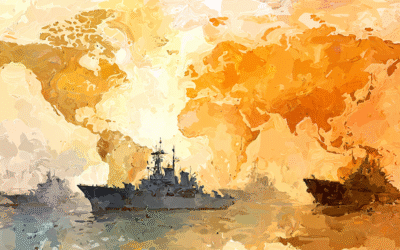There’s a moment I remember vividly from an economics lecture in the early 1980s. My professor—a stern, bow-tied man with unshakable faith in market fundamentals—drew a simple supply and demand curve on the blackboard. “In a free market,” he declared with the conviction of someone stating natural law, “the consumer is king.”
That doctrine felt immutable then, a cornerstone of both economic theory and American identity. The buyer was king. The seller, merely a supplicant at the court of consumer preference.
How curious that something so seemingly permanent could dissolve so completely in just a few decades.
When America Shopped and the World Followed
For most of the 20th century, American purchasing power functioned as a form of soft dominance more effective than any military deployment. The sheer gravitational pull of the American consumer market—approximately 330 million people with disposable income—bent global production to its will.
This economic reality shaped everything: our foreign policy, our labor markets, our cultural narcissism, and most relevantly for us today, our assumptions about leverage.
It worked like this: American consumers wanted cheaper goods. American retailers obliged by seeking the lowest-cost producers. Producers around the world, desperate for access to American wallets, competed fiercely to meet American standards, prices, and delivery timelines. The math was simple and brutal—fail to please the American buyer, and you’d be replaced by someone who would.
This arrangement built the tiger economies of East Asia. It transformed China from agrarian backwater to manufacturing colossus. It allowed American diplomats to casually open or close economic doors for entire nations with nothing more than adjustments to trade status.
Through this lens, Donald Trump’s recent tariff escalations make perfect historical sense. They emerge from that 20th-century mindset: America buys, therefore America decides. Don’t like our terms? Fine, we’ll shop elsewhere. There are always more sellers than buyers at this particular bazaar.
But something profound has changed in the geometry of global trade. And like astronomers who still plotted celestial movements according to Ptolemy long after Copernicus had proven the earth revolved around the sun, our economic assumptions have failed to keep pace with economic reality.
The Great Disaggregation
To understand how power inverted, we need to understand how production transformed.
Globalization didn’t merely move factories from Detroit to Shenzhen. That would have been a simple geographical shift, leaving the underlying power dynamics intact. What actually happened was far more profound: it disaggregated production entirely.
Consider the iPhone in your pocket. Its components cross international borders 70+ times during production. Its rare earth elements are mined in Congo, refined in China, shipped to Malaysia for processing, assembled in Vietnam, and programmed with code written across five continents. No single nation—not even Apple itself—controls the entire production chain.
This is the hidden revolution within globalization—what economists call the “unbundling” of production. Products didn’t just move overseas; they fragmented into global supply webs of staggering complexity.
And here lies the inversion: In a world of unbundled production, power shifts from those who buy finished goods to those who control critical production nodes.
Because not all nodes are created equal.
The New Gatekeepers
Imagine global trade as a vast circulatory system. Most pathways have alternatives—if one clots, blood flows elsewhere. But certain vessels cannot be bypassed. These are the choke points where seller power now concentrates with devastating effect.
Take Taiwan Semiconductor Manufacturing Company (TSMC). This single firm produces over 90% of the world’s most advanced semiconductors. If TSMC stops shipping chips tomorrow, the global tech industry effectively ceases to function. There is no alternative source. There is no quick replacement. The buyer—even the American buyer—simply waits, pays whatever is asked, or goes without.
This pattern repeats across industries:
- The Netherlands’ ASML holds a monopoly on the extreme ultraviolet lithography machines required to manufacture advanced chips. Without ASML’s blessing, you cannot enter the leading-edge semiconductor business at any price.
- China refines 85% of the world’s rare earth minerals—materials essential for everything from wind turbines to missile guidance systems. They’ve demonstrated willingness to weaponize this position, notably cutting Japan’s supply during territorial disputes.
- Three global shipping alliances control 80% of oceanic container transport. During the pandemic, they collectively quadrupled shipping rates because they could.
- Russia and Qatar together control over 40% of global natural gas exports, giving them outsized influence over European energy security.
In this landscape, the old economic maxim that “capital flows to the highest return” faces a new constraint: it can only flow through channels others control.
The Fungibility Fallacy
Trump—and economic nationalists across the political spectrum—operate under what we might call the “fungibility fallacy.” This is the belief that goods and production can be easily substituted or relocated if terms become unfavorable.
Don’t like Chinese solar panels? Slap on tariffs and watch domestic production bloom. Worried about Taiwanese chips? Invest billions in Arizona fabs.
But modern production doesn’t work that way. The painful truth is that many critical supply chains cannot be replicated at any price in the short term, and perhaps not in the long term either.
Consider the humble field of rare earth processing. China didn’t achieve dominance through natural advantage alone. They spent decades tolerating environmental devastation and heavily subsidizing an industry with razor-thin margins. America once led this field but abandoned it because the economics made no sense for private enterprise.
Could we rebuild it? Certainly—with enough time, money, environmental compromise, and technical expertise. But “enough” here means decades, not years. It means billions in sustained investment with no guarantee of market viability. It means accepting that for the foreseeable future, we remain dependent on the very supply chains we’re trying to replace.
This is the central paradox of economic nationalism: It aims to restore sovereignty that was voluntarily traded away for efficiency, not realizing that efficiency has calcified into structural dependency.
The Vulnerability Is the System
What makes this situation particularly dangerous is that vulnerability isn’t a bug in the system. It’s a feature. The entire architecture of global trade was optimized for efficiency, not resilience.
Just-in-time delivery chains eliminated costly inventory buffers. Single-sourcing strategies maximized economies of scale. Geographic specialization concentrated expertise in regional clusters impossible to replicate.
Every incremental efficiency gain came with a corresponding reduction in redundancy. Every cost-saving measure reduced optionality. Every outsourcing decision atrophied domestic capacity.
The 2008 financial crisis taught us the dangers of systemic risk in banking. The 2020 pandemic revealed similar fragility in physical supply chains. But we’ve been slow to internalize the lesson: Optimization and resilience are opposing forces. You cannot simultaneously maximize both.
The nationalist impulse—to bring production home, to reduce dependency, to restore sovereignty—reflects a legitimate recognition of this vulnerability. But it chronically underestimates both the depth of our integration and the cost of disentanglement.
When Nationalism Meets Reality
Trump’s recent tariff escalations against China, Mexico, and Canada represent a textbook case of buyer-power thinking colliding with seller-power reality.
The theory is straightforward: By imposing tariffs, America forces trading partners to accept less favorable terms or lose access to American consumers. In the old model, this leverage would be decisive.
But the new reality is proving stubbornly different:
- When Trump targeted Chinese solar panels, China retaliated by restricting critical minerals needed for American clean energy production. Alternative sources existed but at much higher prices and lower volumes.
- When tariffs hit Mexican manufacturing, companies didn’t simply relocate production to the U.S. Instead, they absorbed the costs, automated more aggressively to offset labor costs, or shifted to even more distant producers.
- Canada, rather than capitulating on lumber tariffs, diversified exports to Asian markets while simultaneously challenging American actions through trade dispute mechanisms.
The common thread? Sellers adapted, retaliated, or simply passed costs back to American buyers. The assumed leverage failed to materialize.
Beyond Binary Thinking
This isn’t an argument against economic nationalism per se. There are legitimate reasons to reduce dependency on potential adversaries for critical goods. There are valid concerns about deindustrialization and the hollowing out of middle-class jobs. There’s a reasonable debate about whether efficiency should always trump resilience.
But effective policy requires accurate understanding of power dynamics. And the fundamental error in current nationalist approaches is binary thinking—the belief that the choice is between globalized dependency and sovereign self-sufficiency.
Reality demands nuance. Complete self-sufficiency is neither achievable nor desirable in a world of complex goods. Even at the height of the Cold War, America and the Soviet Union traded crucial commodities. Even North Korea, the world’s most isolated economy, depends on Chinese inputs.
The question isn’t whether to participate in global trade but how to structure that participation to preserve options and leverage. This requires distinguishing between three categories of goods:
- Critical vulnerability goods where dependency creates existential risk (advanced semiconductors, certain pharmaceuticals, defense technologies)
- Strategic advantage goods where domestic production provides comparative economic advantage (emerging technologies, advanced manufacturing)
- Ordinary consumption goods where global sourcing remains advantageous (consumer electronics, clothing, basic commodities)
Each category demands different policy approaches. Blanket tariffs that treat furniture imports the same as semiconductor imports miss this crucial distinction.
The Path Forward: Strategic Interdependence
The antidote to naive globalism isn’t reactive nationalism—it’s strategic interdependence. This means:
- Building redundancy in critical supply chains, even at higher cost
- Diversifying dependencies across aligned nations rather than concentrating them
- Preserving critical industrial commons that undergird innovation
- Stockpiling truly essential materials
- Investing in long-term capacity building rather than short-term protection
- Forging deeper economic integration with allies while reducing vulnerability to adversaries
This approach recognizes that in a world of specialized production, everyone is simultaneously buyer and seller. Power comes not from market size alone but from the strategic positioning within global networks.
The countries that will thrive in this new landscape aren’t those that try to rebuild self-contained industrial ecosystems of the 1950s but those that understand and navigate the networked nature of modern production.
The Paradox of Power
There’s a profound irony in all this. At precisely the moment when American political discourse has embraced economic nationalism, the tools to implement it have weakened significantly.
Tariffs—the blunt instrument of choice—worked best in a world where buyers held natural advantage. They lose effectiveness in a world of specialized production and essential chokepoints.
The Trump administration’s 2025 policy posture reflects an understandable impulse to restore lost leverage. But it employs tools designed for a trade landscape that no longer exists.
True economic sovereignty today doesn’t come from dictating terms to willing sellers. It comes from controlling, or at least influencing, the nodes through which global trade must flow. It means securing access to critical technologies, materials, and production processes that cannot be easily replicated.
The nations that understand this shift—China foremost among them—are focusing not on border measures but on dominating key production nodes. Their strategy isn’t to win at yesterday’s game but to control the board on which tomorrow’s game is played.
For America and other market democracies, the challenge is clear: Either develop a more sophisticated understanding of where power now resides in global trade or continue fighting yesterday’s economic battles with yesterday’s economic weapons.
The future belongs to those who recognize that in a networked world, the most important form of sovereignty isn’t the ability to close borders but the capacity to keep them strategically open on favorable terms.
Because in today’s global economy, the one who controls the chokepoints—not the one who holds the purse—ultimately holds the power.
The Peace Dividend of Interdependence
There’s something we haven’t yet discussed, something that hovers just beneath the surface of these economic power shifts: the question of peace itself. Trade networks—for all their flaws and inequities—bind nations together in webs of mutual interest that raise the cost of conflict. The Romans understood this; they built roads not just for military expansion but for commercial integration. The Pax Romana was as much an economic achievement as a military one. When the British Navy controlled global shipping lanes in the 19th century, it enabled a relatively peaceful period of global commerce. Not perfect, certainly not just—but more stable than what preceded it.
Today’s disaggregated supply chains create a different kind of interdependence. Taiwan’s semiconductor dominance doesn’t just give it economic leverage; it provides a powerful deterrent against Chinese military aggression. Russia’s natural gas exports to Europe didn’t just generate revenue; they created a hesitancy that bought Ukraine precious months of Western indecision. Economic entanglement creates friction that slows the machinery of war.
But here’s the paradox that should keep us awake at night: the same nationalist impulses that correctly identify vulnerability are pushing policies that could unravel these stabilizing bonds. If every nation races to secure its own supply chains, to eliminate dependencies, to wall off its economic ecosystem—we don’t get a more stable world. We get a fragmenting one where the guardrails of mutual interest are dismantled one by one.
This isn’t a naive defense of globalization—that ship has sailed. But in our rush to correct its excesses, we risk undermining its greatest achievement: the binding of nation-states into relationships where violence becomes too costly to contemplate. The grand bargain of the post-war economic order—American markets in exchange for global stability—created the longest period of great power peace in modern history.
As we navigate this new landscape where seller leverage has replaced buyer dominance, perhaps the most important question isn’t who holds power, but how that power will be used. Will it be wielded as a weapon, accelerating fragmentation? Or as a bridge, preserving connections even as we diversify them? The answer won’t just determine economic outcomes. It will shape the prospects for peace in an age where technological connectivity and political tribalism pull in opposing directions. And in that tension lies perhaps the most important project of our time: finding ways to preserve interdependence while reducing its vulnerabilities—not just for prosperity’s sake, but for peace.










0 Comments